Bring on the Clouds
March 20 - The Mind - Cloudy - #35-2024
MIND
AL
3/21/2024


Last night’s sunset was underwhelming due to clear skies. The orange light glowed momentarily on the horizon, but could have been dancing higher if the clouds from earlier were still around. Clouds are essential for a spectacular sunrise or sunset. Without clouds, the rays of the sun have nothing to reflect against as it begins or ends the day. High level clouds bring the best color spectrum, as they keep the horizon clear to let the sunlight through, while acting as a foil to broadcast the light. Technically, the red and orange wavelengths are longer, and we see them when the sun is farther away and the light travels more distance through the atmosphere at sunrise or sunset. The blue wavelengths that give us bright daytime skies are shorter and are overpowered by the reds at sunrise and sunset. I’m not so interested in the technical part, but I do think the results are stunning.
Some of the best sunrises and sunsets happen following a storm. The clearing horizon coupled with the remaining clouds and rain sets nearly ideal conditions. My best example of this is the sunrise we experienced at Flaming Gorge after the extreme winds and storms awakened us at 4:00am. The whole sky seemed to light up with diversely brilliant color, and that was the work of the clouds.
Pollution and smoke can also alter sunrises & sunsets. If they’re in the distance, they can enhance the effects, but if they’re too thick or right on top of you, they block out all of the light, making the setting sun nothing more than increased darkness.
I remember as a kid when we would sit outside and watch the clouds pass by, laying in the grass to stare up at them, imagining all sorts of shapes and figures. As an older adult, I sometimes feel like I am back there when I look up at the clouds. I’ve seen anteaters chasing a trail of ants, tugboats splashing through the waves, or Snoopy and Woodstock, to name a few. Somedays now, I can see many things in the clouds when I look up, while other days, there is nothing but dreary clouds. It must be my mood that affects how I see them. As a schoolkid, I knew the types of clouds: cirrus, stratus, cumulus, and nimbus. I wonder how many of us could identify them now?
Cirrus clouds are high and wispy, trailing in white across an otherwise blue sky. They’re made up of ice crystals and are some of the first clouds to form. I think of feathers or brush strokes when I see these clouds. Their presence can go unnoticed, as light filters through them like they aren’t even there.
Stratus clouds look like a blanket, spreading across the sky in a broad fashion. They are often dingy and drab, giving a hazy, blah tone to the sky. Fog is a ground cloud that rises from the surface and becomes a stratus cloud or dissipates from the heat of the sun.
The soft, pillowy puffballs are cumulus clouds, rising from the low levels of the atmosphere. These cotton balls are usually very dense, with a flat bottom and well defined edges. These are the ones we all stare at to find images in their shapes.
Nimbus clouds are thick dark gray clouds that storm into our lives with rain and snow. These ominous clouds are bursting with power, booming with thunder, or exploding with lightning.
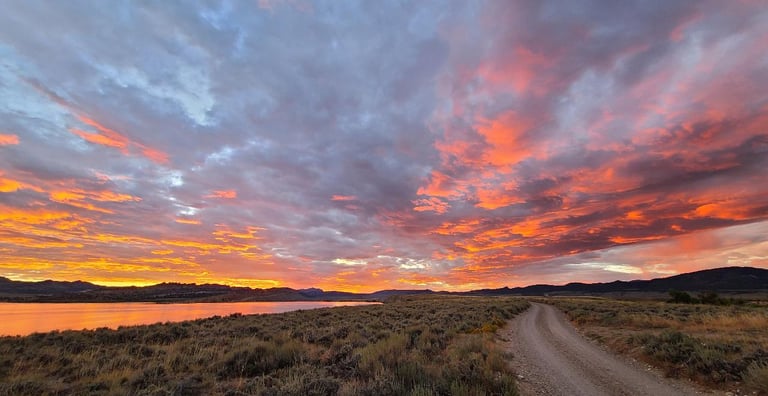

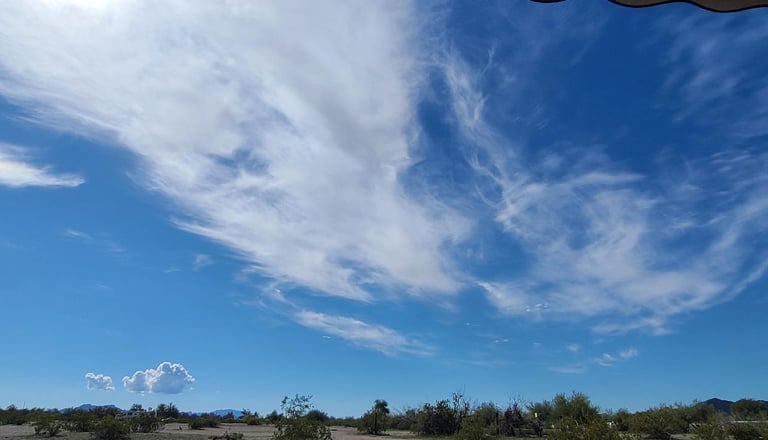





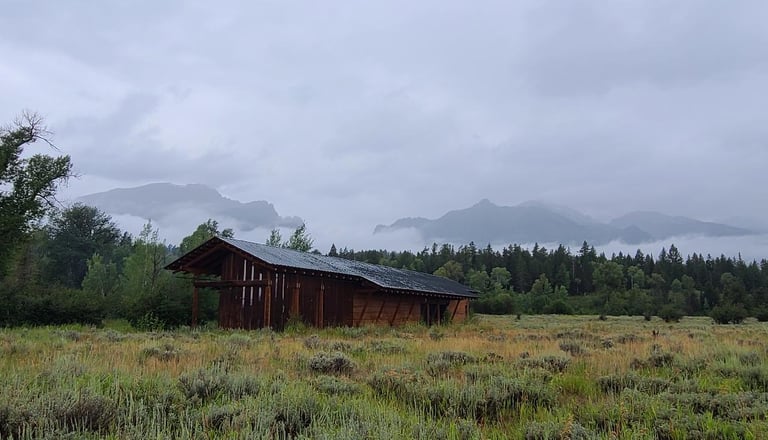


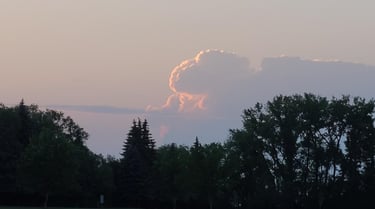
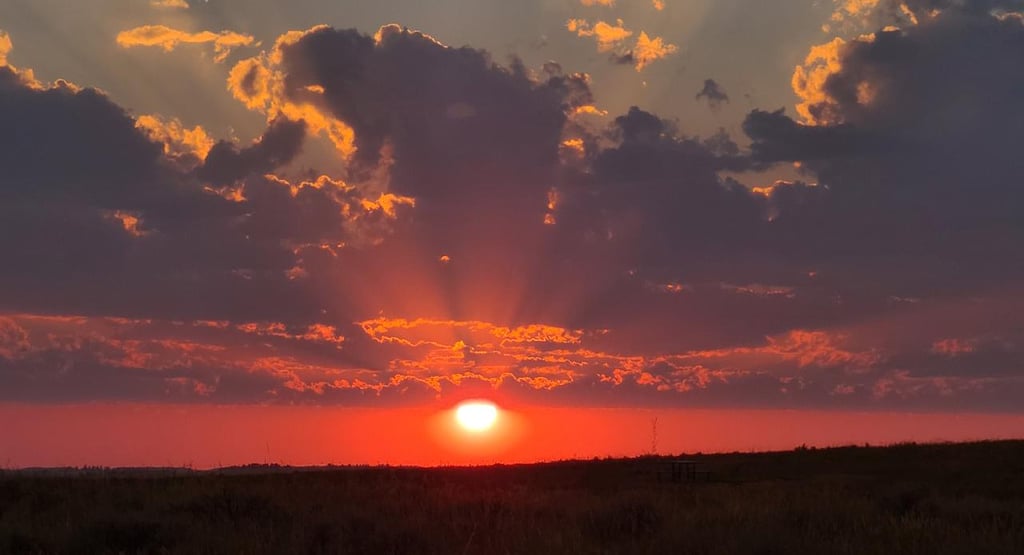

Newer science has remixed and combined the original four main types of clouds in various fashions, so we now have ten forms of clouds, like cirrocumulus, nimbostratus, and cumulonimbus to have a more detailed description. Cumulus and cumulonimbus clouds are the devils that unleash hurricanes, supercells, cloudbursts, and tornados. So much energy is contained within them, evident by the winds and turbulent forces they generate.
Clouds form from a microscopic particle of smoke or dirt that is blown up into the sky, giving something on which the tiny water molecules can attach. As it continues to rise, the temperature decreases and more water molecules attach, and more droplets develop, forming clouds. Did you know that these water molecules are always condensing and evaporating? That’s why clouds are constantly changing shape and size.
Clouds have the power to affect our mood. The cloudy, sunless days of winter are depressing. They sap the energy out of so many people they have a name for it: Seasonal Affective Disorder. A couple days of sunshine, or spending time under sun lamps can make this better. On the opposite side, I find a day with beautiful blue skies dotted with cotton ball clouds or brushstrokes of cirrus clouds to be cheery and bright, improving my mood. Other times, I’m hoping for clouds to bring a shady respite from the sun’s heat and intensity.
Something odd we discovered with our solar panels this winter is how cloud cover effects them. We built some stands for our portable panels, so they could be tilted toward the sun, while the rooftop panels are flat. On sunny days the portable panels produced more energy, but surprisingly on cloudy days the flat panels did better. We learned that the clouds scatter the sun’s rays, so flat panels are better able to capture the energy than ones that are pointed to the sun when it is cloudy.
Then there is the old saying “every cloud has a silver lining.” Some clouds actually look like they have a silver lining, when the sun is behind them and the lacy edges of the clouds are bright. It’s a good saying that reminds us that no matter how bad a situation might seem, there is always something good that can come out of it.
We should all look for that silver lining from time to time.
I’m sure that we will have many more of these fabulous sunrises and sunsets this summer.
Share your comments on Facebook or email us at roadfronts@gmail.com
Subscribe for monthly updates
Current location:
